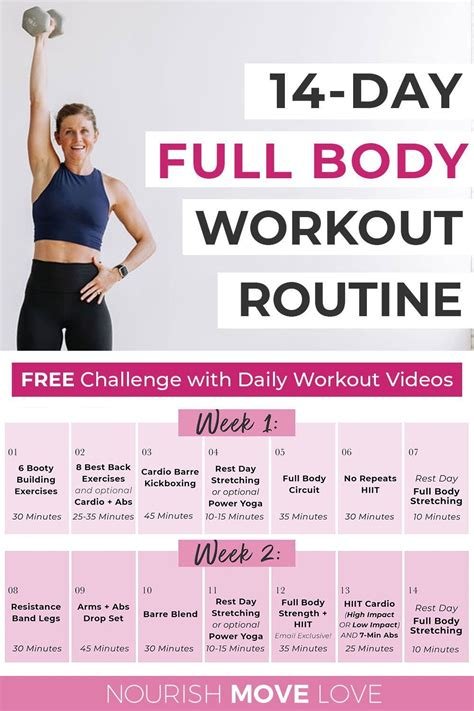Daily Exercise Routine for Female Athletes
As a female athlete, maintaining a daily exercise routine is crucial for optimal performance and overall well-being. In this blog post, we will delve into the various aspects of designing an effective exercise program specifically tailored to the needs of female athletes. From the benefits of a daily exercise routine to incorporating warm-up exercises, strength training, cardiovascular training, flexibility and mobility exercises, injury prevention strategies, and the importance of recovery and rest days, we will cover it all. Whether you’re a professional athlete or simply enjoy staying active, having a comprehensive understanding of these elements is essential for reaching your fitness goals and preventing injuries. So, let’s explore the key components of a daily exercise routine for female athletes and learn how to maximize performance while prioritizing rest and recovery.
Benefits of a Daily Exercise Routine
Having a daily exercise routine can bring about numerous benefits for both your physical and mental well-being.
Regular physical activity helps to improve your cardiovascular health, strengthen your muscles, and enhance your overall endurance.
In addition, engaging in daily exercise can also help to reduce the risk of chronic diseases such as heart disease, diabetes, and obesity.
Furthermore, maintaining a consistent exercise routine can also have a positive impact on your mental health, helping to alleviate stress, anxiety, and depression.
Designing an Effective Exercise Program
When it comes to designing an effective exercise program, it’s important to take a holistic approach that considers the individual’s goals, fitness level, and any potential limitations or health concerns. The program should be tailored to the specific needs of the person, whether they are looking to improve strength, endurance, flexibility, or overall health.
One key factor in designing an effective exercise program is to incorporate a variety of activities that target different muscle groups and cardiovascular systems. This can help prevent overuse injuries and ensure that the body is getting a well-rounded workout.
Additionally, it’s important to gradually progress the intensity and duration of the exercises to avoid burnout or injury. A good exercise program should also include a balance of resistance training, cardiovascular exercise, and flexibility training to ensure a comprehensive approach to fitness.
Finally, it’s essential to regularly review and adjust the exercise program to ensure that it continues to challenge the individual and help them reach their fitness goals. By taking a thoughtful and personalized approach to designing an exercise program, individuals can maximize their fitness results and create a sustainable exercise routine that promotes overall health and well-being.
Warm-up Exercises for Female Athletes
Females, like all athletes, should prioritize warm-up exercises before engaging in physical activity. A proper warm-up routine can help prevent injuries and improve overall performance. It is important for female athletes to focus on specific warm-up exercises tailored to their unique physiological needs and potential injury risks.
One of the most effective warm-up exercises for female athletes is dynamic stretching. This involves moving the body through a range of motion to stretch the muscles, improve flexibility, and increase blood flow to the muscles. Examples of dynamic stretching exercises include leg swings, arm circles, and torso twists. Dynamic stretching helps prepare the body for the demands of physical activity and can help prevent muscle strains and sprains.
In addition to dynamic stretching, female athletes should incorporate activation exercises into their warm-up routine. These exercises target specific muscle groups to activate and engage them before physical activity. For example, glute bridges, hip flexor stretches, and core activation exercises can help improve stability and reduce the risk of injury during training and competition.
Lastly, incorporating sport-specific movements and drills into the warm-up routine can help female athletes prepare for the specific movements and skills required during their sport. This can include agility drills, sport-specific dynamic movements, and practice of technical skills to prepare the body and mind for the demands of competition.
Strength Training for Optimal Performance
Strength Training for Optimal Performance
Strength training is an essential component of any athlete’s fitness routine. It is the key to building muscle mass, increasing strength, and improving overall performance. By incorporating strength training into your workout regimen, you can enhance your athletic abilities and achieve peak physical condition. Whether you’re a professional athlete or a weekend warrior, incorporating strength training into your routine can help you reach your full potential.
When it comes to strength training, it’s important to focus on compound exercises that work multiple muscle groups at once. This includes exercises such as squats, deadlifts, and bench presses. These exercises not only build strength but also improve overall muscular development and coordination. Additionally, incorporating variations of these exercises, such as lunges or overhead presses, can target specific muscle groups and further enhance performance.
Another key aspect of strength training for optimal performance is progressive overload. This involves gradually increasing the intensity, volume, or frequency of your workouts to continue challenging your muscles and promoting growth. By consistently pushing your limits and striving for improvement, you can maximize your strength gains and enhance your athletic performance.
In addition to building strength, strength training can also help prevent injuries and improve overall stability. Strong muscles and connective tissues provide better support for joints and reduce the risk of injury during physical activity. By incorporating exercises that target stabilizing muscles and improve balance, athletes can improve their overall performance and reduce the risk of common sports-related injuries.
Cardiovascular Training for Endurance
Cardiovascular training is essential for improving endurance and overall cardiovascular health. It involves exercises that increase your heart rate and help strengthen your heart and lungs. This type of training can be beneficial for athletes, as well as individuals looking to improve their stamina and endurance levels.
One effective cardiovascular training method is high-intensity interval training (HIIT). This involves alternating between short bursts of intense exercise and periods of rest or lower-intensity activity. HIIT has been shown to improve cardiovascular fitness and endurance in a shorter amount of time compared to traditional steady-state cardio workouts.
In addition to improving endurance, cardiovascular training can also help reduce the risk of heart disease, lower blood pressure, and improve overall heart health. It can also aid in weight loss and improve metabolic health, making it an important component of any fitness routine.
It’s important to incorporate a variety of cardiovascular exercises into your training program, such as running, cycling, swimming, and rowing. This helps prevent boredom and keeps your body challenged, leading to better overall results in terms of endurance and cardiovascular fitness.
Flexibility and Mobility Exercises
Ensuring flexibility and mobility is essential for overall health and optimal performance in any physical activity. Incorporating flexibility and mobility exercises into your workout routine can help prevent injuries, improve posture, and enhance athletic performance.
One of the most effective ways to improve flexibility and mobility is through regular stretching. Dynamic stretching, which involves moving the muscles and joints through a full range of motion, can help improve flexibility and enhance athletic performance. It is important to include dynamic stretching exercises in your warm-up routine to prepare the body for physical activity.
In addition to stretching, incorporating mobility exercises such as foam rolling and yoga can help improve joint mobility and overall flexibility. Foam rolling can help release muscle tightness and improve blood flow to the muscles, while yoga can improve flexibility, balance, and posture. Including these exercises in your workout routine can help enhance overall flexibility and mobility.
Overall, adding flexibility and mobility exercises to your workout routine can have numerous benefits, including improved athletic performance, reduced risk of injury, and better overall health. By incorporating a variety of stretching and mobility exercises into your routine, you can improve your flexibility and mobility, leading to better physical performance and overall well-being.
Injury Prevention Strategies
One of the key components of any athletic training program is injury prevention. It is crucial for athletes to incorporate strategies into their training routines to minimize the risk of injury and ensure longevity in their sport.
One effective injury prevention strategy is to focus on proper technique and form during training and competition. By maintaining correct posture and body mechanics, athletes can reduce the likelihood of overuse injuries and musculoskeletal imbalances.
Another important aspect of injury prevention is adequate rest and recovery. Athletes should prioritize getting enough sleep, allowing sufficient time for muscle repair and growth, and taking regular rest days to prevent overtraining and burnout.
Additionally, cross-training and incorporating a variety of exercises into a training program can help prevent overuse injuries and improve overall strength and stability. By engaging in different activities, athletes can avoid repetitive stress on specific muscles and joints.
Recovery and Rest Days for Female Athletes
Rest and recovery days are essential for female athletes to ensure their bodies can repair and rebuild after strenuous workouts and competitions. These days give the muscles, tendons, and ligaments a chance to recover from the stress of training, which is crucial for avoiding injuries and improving performance.
During rest days, female athletes should prioritize activities that promote relaxation and healing, such as gentle stretching, yoga, or light walking. It’s important to listen to the body and not push through fatigue or soreness, as this can lead to overtraining and burnout.
Recovery days also provide an opportunity for mental rejuvenation. Female athletes often face pressure from coaches, teammates, and society, so taking a day off can help reduce stress and improve overall well-being. It’s okay to take a break and focus on self-care during recovery days.
Ultimately, incorporating rest and recovery days into a training schedule is crucial for female athletes to maintain balance, avoid injury, and achieve long-term success in their sport. By prioritizing rest and recovery, female athletes can optimize their training and performance while minimizing the risk of burnout and overtraining.
Frequently Asked Questions
What are the benefits of a daily exercise routine for female athletes?
A daily exercise routine can improve strength, endurance, flexibility, and overall performance. It also helps in preventing injuries and promoting recovery.
How can an effective exercise program be designed for female athletes?
An effective exercise program for female athletes should include a combination of strength training, cardiovascular training, flexibility exercises, and injury prevention strategies. It should be tailored to the specific needs and goals of the athlete.
What are some recommended warm-up exercises for female athletes?
Some recommended warm-up exercises for female athletes include dynamic stretches, light jogging, jumping jacks, arm circles, and leg swings to prepare the body for the workout.
How can female athletes incorporate strength training for optimal performance?
Female athletes can incorporate strength training by using weights, resistance bands, bodyweight exercises, and functional movements to improve muscle strength, power, and endurance.
What are some effective cardiovascular training methods for female athletes?
Effective cardiovascular training methods for female athletes include running, cycling, swimming, interval training, and HIIT (High-Intensity Interval Training) to improve endurance and aerobic capacity.
What are some recommended flexibility and mobility exercises for female athletes?
Recommended flexibility and mobility exercises for female athletes include yoga, Pilates, dynamic stretching, foam rolling, and mobility drills to improve range of motion and reduce the risk of injury.
What are some injury prevention strategies for female athletes?
Injury prevention strategies for female athletes include proper warm-up and cool-down, cross-training, proper equipment and footwear, balanced nutrition, adequate rest and recovery, and listening to the body’s signals.
How important are recovery and rest days for female athletes?
Recovery and rest days are crucial for female athletes to allow the body to repair and adapt to the training stimulus, prevent overtraining, reduce the risk of injury, and optimize performance.






